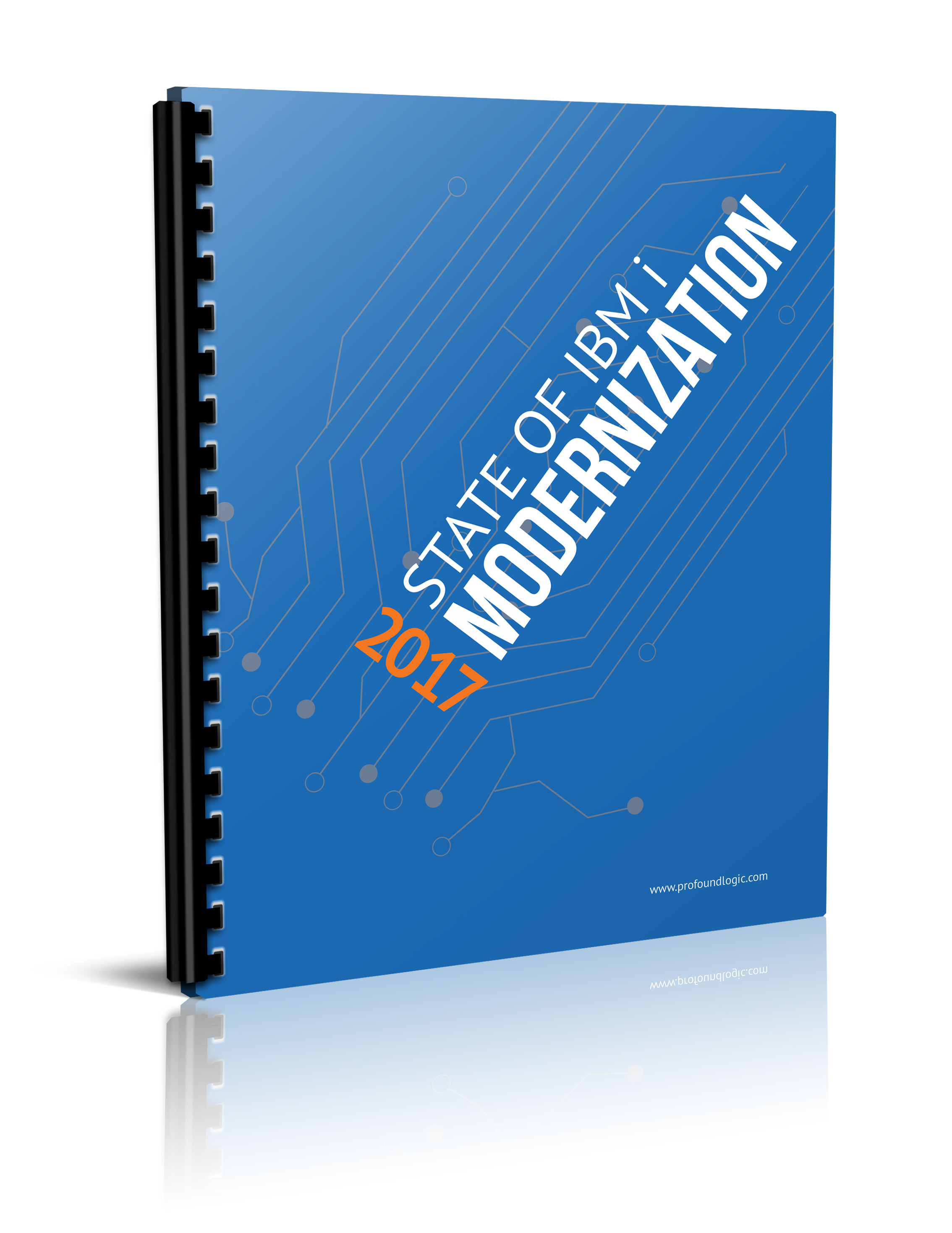
Glad to have you back for this week's IBM i Pulse! Each week we will be taking a deeper look at the latest IBM i and Profound Logic news.
From Our Experts:
- Brian May shows you how Making Node.js a Business Application Language is possible in this MC Press article.
Profound Logic News:
- Profound UI Version 6 is now available! Check out what we have updated.
- Watch on-demand: Deliver Modern IBM i Business Apps with Profound UI Version 6
Educational Resources:
- Ted Holt gives you an introduction to Profound UI's Genie Tool (video) with the new Version 6.
- Get Started with Profound.js with this easy to follow introduction video.
Product News:
- Learn how to Create Custom Tool Tips with this Profound Pro Tip.
Industry News:
Introducing IBM Watson Studio by Armand Ruiz
This spring IBM introduced IBM Watson Studio which is designed to accelerate the machine and deep learning workflows that are required to include AI in your business. This suite of tools was created for data scientists, application developers, and experts alike. The Watson Studio allows these experts and professionals to collaboratively connect to data and use it to build, train, and deploy models at scale. A successful AI project requires a combination of algorithms, team, data, and a powerful computing infrastructure.
Before the introduction of the Watson Studio, there was a gap between the experts of data and domains. Even highly technical IT professionals had difficulty organizing and making sense of the vast amount of data that AI can handle. Domain experts and IT professionals worked with different tools and no visibility to each other's work which resulted in AI falling short in its promise to augment people's expertise. Now the Watson Studio can help!
Watson Studio helps to close this gap by unifying the process of development and the experience to create new insights from their data. Watson Studio gives teams the ability to enable multidisciplinary teams across businesses to collaborate and make the development process much more convenient for all parties.
Read the full description of Watson Studio here
Four Digital Transformation Trends Driving Industry 4.0 by Daniel Newman
The term Industry 4.0 is used to describe the mixing of traditional manufacturing with the ever-improving technological world, you may have also heard it referred to as "smart factory." There is currently a revolution in the manufacturing industry and technology is at the forefront of this revolution. Advanced analytics, machine learning, IoT devices, cloud computing and so much more are pushing the industry to new heights! Here are 4 Digital Transformations that are pushing the manufacturing industry to the next level:
Connected Consumers, Customized Experiences
Connecting customers to their assets have been one of the biggest changes in the industry, that includes customization for individual customers. Gone are the days of mass production of one item for millions of customers. With social networks, customers now can interact with businesses and those interactions give valuable data that those businesses can use to please their customer base.
Empowered Employees
While the manufacturing industry is connecting more with their customer base, they are also connecting with their employees. Empowered employees are given more access to the information that needs to accomplish their tasks, and new collaboration tools are making it easier to access the necessary data anywhere in the world. Remote work is now more possible than ever which gives companies the chance to recruit the best talent out there, no matter where they live.
Optimized Production
Productivity is a huge transformation over the last couple of years. New technology has given the manufacturing industry the ability to make quick and agile changes in their production, saving time and money. As customer demands continue to shift, businesses are able to adapt to the ever-changing needs of their consumers.
Transformed Products
With the introduction of IoT devices, a business can now track vehicles, machinery, maintenance needs, and so much more. These new products can save a manufacturer millions of dollars per year, money that can be put back into product development, expansion, and growth, or a host of other important needs. Combining IoT devices with machine learning capabilities allows these manufacturers to make this happen.




